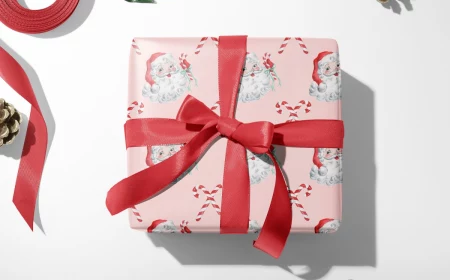The Ultimate Guide to Buying Holiday Socks That Don’t Suck
I still remember the first pair of truly great holiday socks I ever owned. They weren’t a gag gift from an office party but a thoughtful present from an old pro in the textile business. They were made of merino wool, with a subtle, deep green and cranberry red pattern woven right in. Pulling them on was a revelation. It was nothing like the thin, scratchy novelty socks I was used to. These were warm but not sweaty, soft but still felt substantial. That one pair completely changed how I saw this simple garment. It wasn’t just decoration for your feet; it was a small, wearable piece of genuine comfort.
In this article
- It All Starts with the Fiber: What Your Socks Are Really Made Of
- Beyond the Label: How to Spot a Well-Made Sock
- Quick Tip: The 30-Second Sock Quality Test
- Watch Out for These Common Sock Marketing Traps
- How to Choose the Perfect Pair (and a Few Brands to Look For)
- Protecting Your Investment: A Quick Guide to Care
- Heads Up! A Seriously Important Safety Warning
After years of working in textiles—partnering with mills, sourcing high-end cotton, and learning from artisans who have been knitting for generations—I’ve seen what separates a sock that falls apart after two washes from one that becomes a beloved tradition. So, let’s get into it. We’re going to move beyond the silly patterns and look at what makes a pair of festive socks genuinely good, comfortable, and actually worth your money. It’s about turning a common last-minute gift into something thoughtful and lasting.
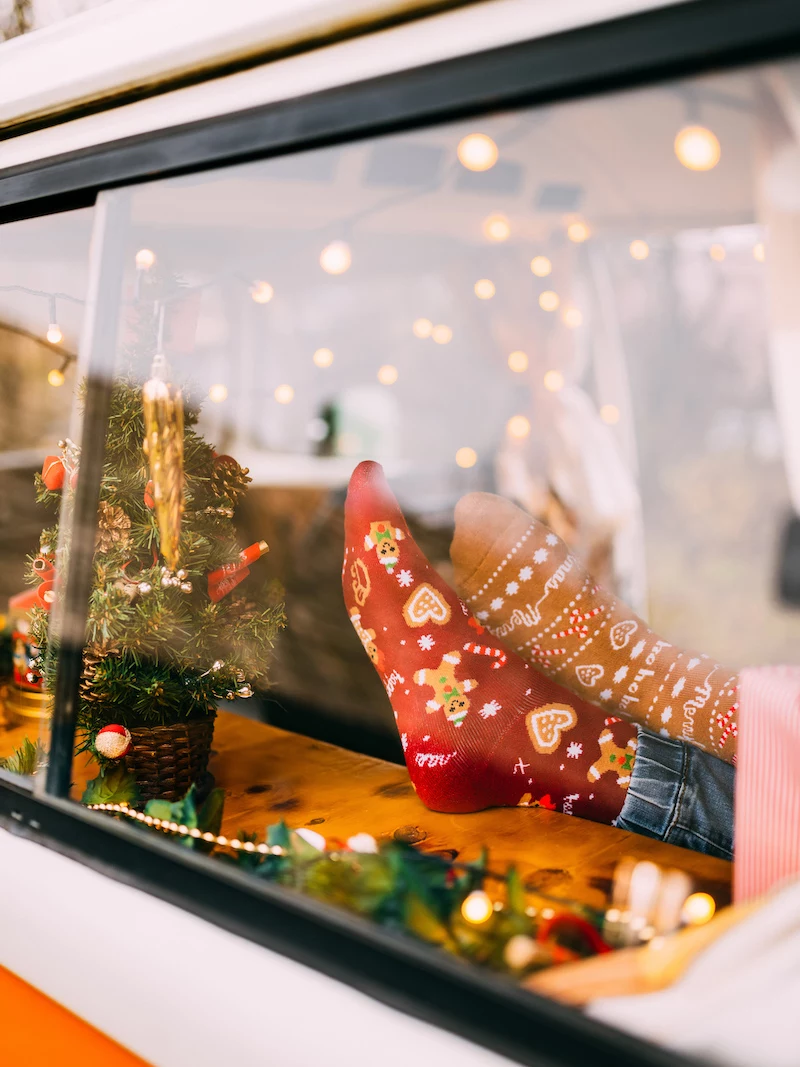
It All Starts with the Fiber: What Your Socks Are Really Made Of
The feel, performance, and price of a sock all start with one thing: the fiber. Manufacturers choose materials for very specific reasons, and understanding those choices helps you know what you’re actually buying.
Natural Fibers: The Heart of Comfort
Combed and Mercerized Cotton: Let’s be clear, not all cotton is created equal. Most cheap novelty socks, the kind you find in a checkout bin for $5, use standard, short-staple cotton. It’s inexpensive, but it feels rough and wears out fast. A huge step up is combed cotton. During processing, fine brushes literally comb out the short, weak fibers, leaving only the long, strong ones. The result is a sock that’s noticeably softer and way more durable. You can feel the difference immediately; it has a smoother, silkier feel.
Want to go even fancier? Look for mercerized cotton. This is a special treatment that strengthens the yarn and makes it absorb dye better. It gives the sock a slight luster and allows for those really deep, vibrant colors that won’t fade. When you see a holiday sock with a rich, saturated red that just pops, it’s probably mercerized. Good to know: It’s also less likely to shrink. Expect to pay between $15 and $25 for a quality pair.
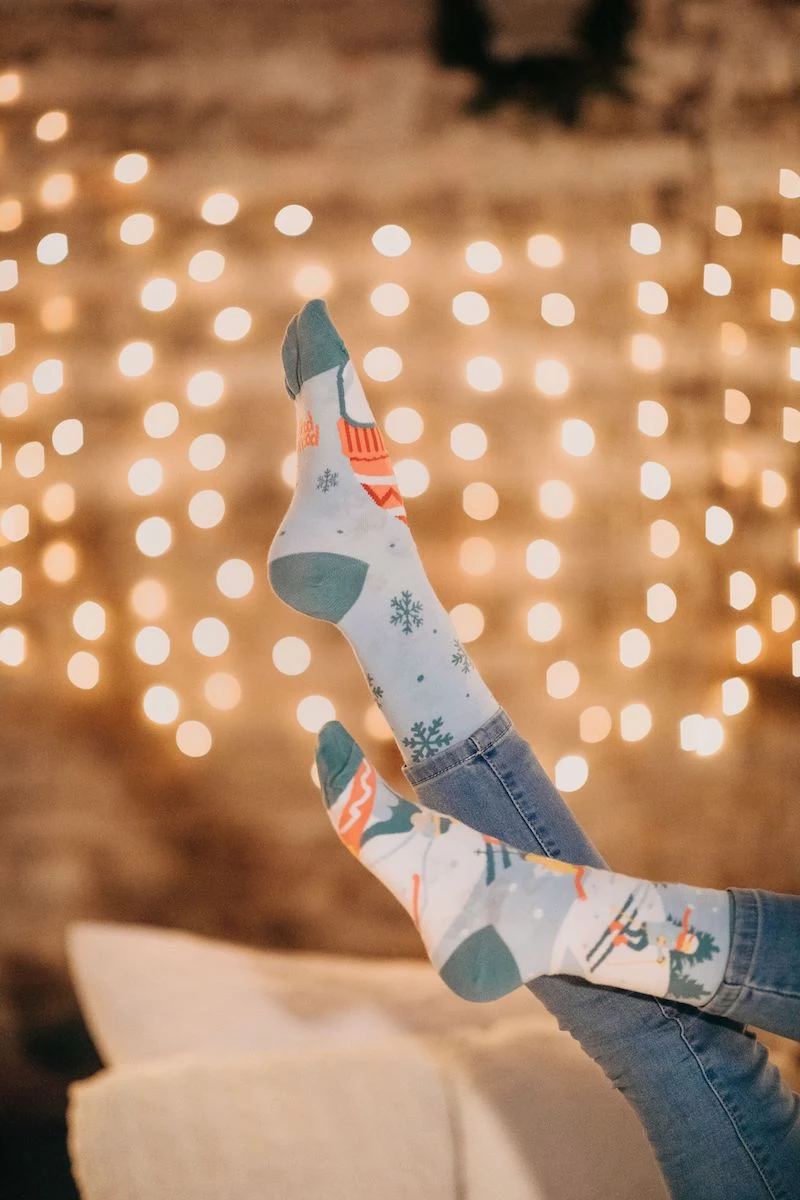
Merino Wool: The Performance King: When people hear wool, they often think of an itchy sweater from their childhood. Merino wool is a completely different animal. Its fibers are incredibly fine, so they bend when they touch your skin instead of poking it. The real magic of merino is its ability to regulate temperature. It keeps your feet warm when it’s cold but is breathable enough to prevent them from getting sweaty indoors. It can absorb a ton of moisture before it even feels damp, which is why it’s a favorite for hikers. A great pair will set you back $25 or more, but for all-day comfort, it’s worth every penny.
Cashmere Blends: The Ultimate Luxury: For pure, buttery softness, nothing beats cashmere. But honestly, 100% cashmere socks are a terrible idea—they’re incredibly delicate and would wear out in a few uses. Instead, you’ll find them as cashmere blends, usually mixed with wool for warmth and a bit of nylon for strength. Even 10-20% cashmere lends that signature soft feel. These aren’t for shoveling snow; they’re special-occasion socks for cozying up by the fire. A true luxury item.

Synthetic Fibers: The Unsung Heroes of Fit and Durability
While natural fibers bring the comfort, synthetics are essential for making socks last. You’ll almost always see them in a blend.
Nylon (or Polyamide): This is the workhorse. It adds incredible durability and resistance to abrasion. That’s why designers almost always weave nylon into the heel and toe areas, even in high-end wool socks. An 80% merino/20% nylon blend will last so much longer than 100% merino, without really changing the feel.
Spandex (Lycra/Elastane): This is what keeps your socks from slouching down into your shoes. A little bit goes a long way, usually just 2-5%. It provides the stretch and, more importantly, the recovery, so the sock hugs your foot and leg without cutting off circulation.
Polyester and Acrylic: A Big Trade-Off: The vast majority of brightly-colored, graphic-heavy novelty socks are made from polyester or acrylic. Polyester is great for a printing technique called dye sublimation, which creates those super detailed, photorealistic images. The major downside? It’s not breathable at all. It can make your feet feel clammy and gross after a few hours. Acrylic is a cheap, lightweight alternative, but it’s notorious for pilling (those annoying little fuzzballs) after just one or two washes. So yeah, these socks are fun and cheap, but you sacrifice a lot in comfort and quality.
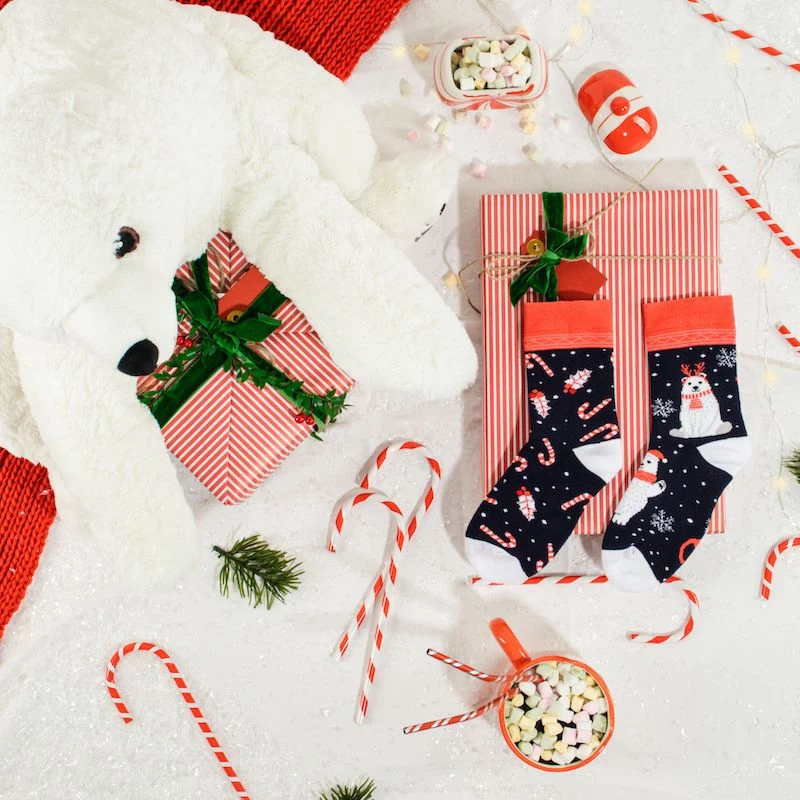
Beyond the Label: How to Spot a Well-Made Sock
Okay, so you know about fibers. But how can you spot quality right there in the store? Here are a few pro techniques you can use.
Printed vs. Jacquard: The Pattern Test
There are two main ways to get a pattern onto a sock, and one is vastly superior.
Printed Socks: This is the cheap and easy method. A blank sock (usually white polyester) is made first, and then the design is basically ironed onto the surface. You can spot a printed sock by stretching it. See how the pattern gets all distorted and you can see the white fabric underneath? That’s the sign. The pattern is just sitting on top and can crack or fade over time.
Jacquard Knitted Socks: This is the gold standard. The design is knitted directly into the fabric with different colored yarns. The pattern is part of the sock itself, so it won’t stretch out or fade. On the inside of the sock, you’ll see a bunch of loose threads where the colors are carried along the back. By the way, those threads (we call them ‘floats’) are a good thing! It’s proof of a quality knit. Just be a little careful not to snag them with your toenails when you pull them on.

The Cuff: Will It Stay Up or Cut In?
A bad cuff will either sag down your ankle all day or dig into your calf. A good cuff uses a quality elastic in a ribbed structure that allows it to stretch wide but snap back comfortably. When you’re in a store, give the cuff a good stretch. It should feel firm but forgiving, not painfully tight.
The Toe Seam: The Ultimate Tell
Want to spot a quality sock in five seconds? Turn it inside out and look at the seam across the toes. Most cheap, mass-produced socks have a thick, bulky ridge that you can feel all day. It’s a major source of irritation.
Here’s a little challenge for you: next time you’re shopping, I dare you to find a cheap sock and a more expensive one. Turn them both inside out and feel the toe seam. You’ll be amazed at the difference. The best socks have a hand-linked or seamless toe, which is completely flat and smooth. It’s a labor-intensive detail that makes a world of difference in comfort. It’s the kind of thing that separates a disposable novelty item from a truly well-made garment.
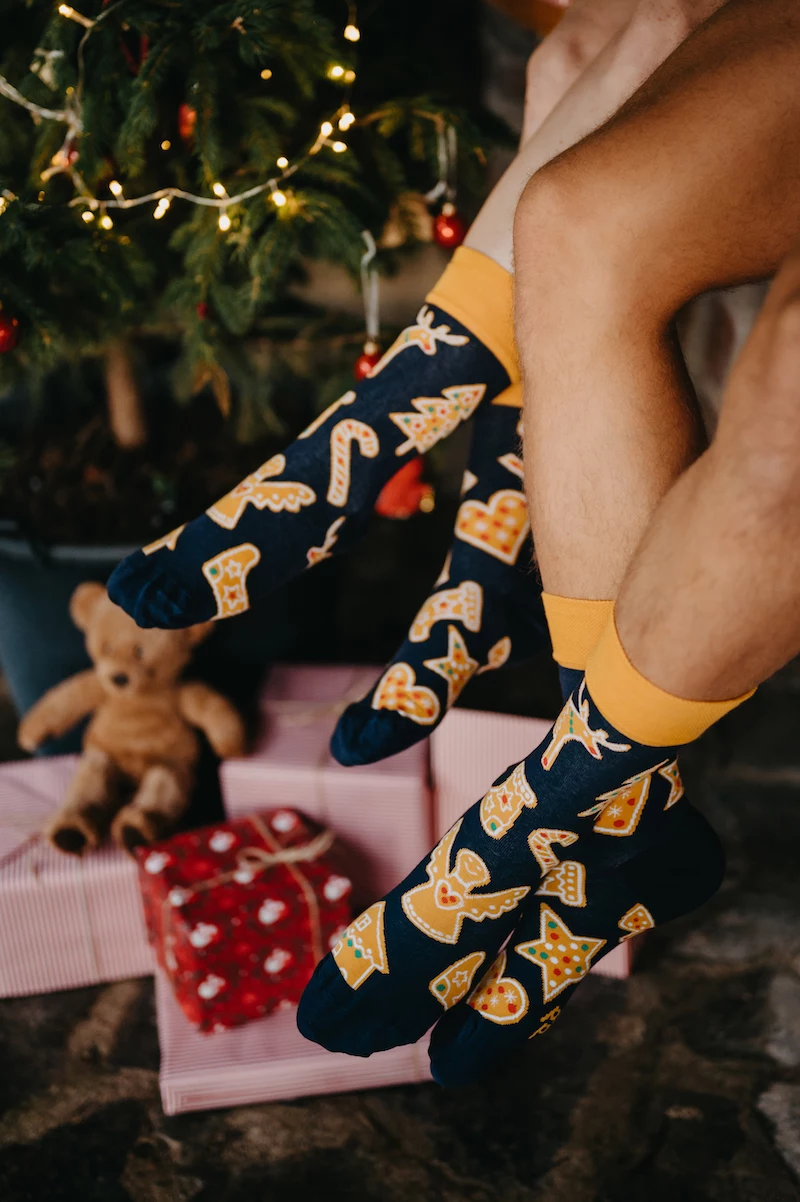
Quick Tip: The 30-Second Sock Quality Test
Don’t want to remember all that? Here’s a super-fast checklist to use in the store:
- Stretch the Cuff: Does it feel flimsy, or does it snap back with gentle strength?
- Stretch the Pattern: Does the white base fabric show through, or does the color stay solid?
- Flip It & Feel It: Is the toe seam a big, bulky ridge, or is it smooth and flat?
Just these three little checks will help you avoid 90% of the bad socks out there.
Watch Out for These Common Sock Marketing Traps
The sock world has a few sneaky tricks up its sleeve. Here are a couple to be aware of.
The “One Size Fits All” Lie: This is almost never true. If you have smaller or larger feet, a one-size sock is either going to bunch up in your shoe or stretch out so much the heel ends up on your ankle. It also distorts the pattern and wears out the fabric faster. Quality socks are always sold in size ranges (like Men’s 9-12 or Women’s 6-9). Sizing is a basic, but critical, part of a good fit.
The “Eco-Friendly” Bamboo Myth: You see “bamboo” socks everywhere, marketed as a green alternative. To be frank, it’s mostly marketing fluff. The process to turn rigid bamboo stalks into soft fabric is a harsh chemical process that results in a material called rayon (or viscose). It’s not particularly durable and its eco-friendly claims are, let’s say, debatable. High-quality organic cotton or responsibly sourced wool are much better choices if sustainability is your goal.
How to Choose the Perfect Pair (and a Few Brands to Look For)
Giving socks becomes way more meaningful when you match them to the person.
- For the Person Who’s Always Cold: Go straight for mid-weight merino wool or a cashmere blend. You’re giving them a gift of pure warmth.
- For the Dapper Dresser: A fine-gauge mercerized cotton sock with a sophisticated pattern is the way to go. It’s classy enough for an office party. For this, you might look at a luxury brand known for fine hosiery.
- For the Outdoor Enthusiast: Look for a sock built for durability. A brand like Darn Tough, made in the US, is famous for its robust construction and lifetime guarantee. They make festive socks that are built like tanks.
- For a Solid, All-Around Choice: You can often find surprisingly good jacquard-knit, mercerized cotton socks from reliable workhorse brands like Gold Toe, which are often available in department stores.
Protecting Your Investment: A Quick Guide to Care
You can make a good pair of socks last for years if you treat them right. Trust me, throwing fine merino wool socks in a hot dryer is a painful lesson you only want to learn once.
- Cotton & Most Synthetics: Easy peasy. Turn them inside out to reduce pilling, wash in cold or warm water, and tumble dry on low. High heat is the enemy of elastic.
- Merino Wool & Cashmere Blends: Pay attention here! This is critical. Wash them on a gentle cycle in cold water only with a mild detergent. Better yet, hand wash them. And for the love of all that is cozy, do not put them in the dryer. The heat will permanently shrink them into a felted mess fit for a doll. Lay them flat to air dry.
Oh, and a quick pro tip: When air-drying wool socks, I just drape them over the side of the laundry basket or a drying rack. Never hang them by the cuff while they’re wet, as the weight of the water can stretch out the elastic over time.
Heads Up! A Seriously Important Safety Warning
Okay, this part is non-negotiable. For anyone with diabetes, poor circulation, or swelling in the legs (edema), a standard sock cuff isn’t just uncomfortable—it can be dangerous. The elastic can restrict blood flow.
If you’re buying for someone with these health concerns, you MUST look for socks specifically labeled as “diabetic,” “non-binding,” or “comfort top.” They are specially constructed to stay up without squeezing. Also, be mindful of plush, slipper-style socks. If they don’t have rubber or silicone grippers on the sole, they can be a massive slipping hazard on hardwood or tile floors, especially for older adults. A small detail like that can prevent a serious accident.
So this holiday season, when you’re thinking about grabbing a pair of festive socks, I hope you’ll look a little closer. Check the fiber content, feel the toe seam, and give the cuff a stretch. By choosing with care, you’re not just giving a piece of clothing. You’re giving a small, daily dose of comfort and quality. And that’s a truly wonderful gift.

